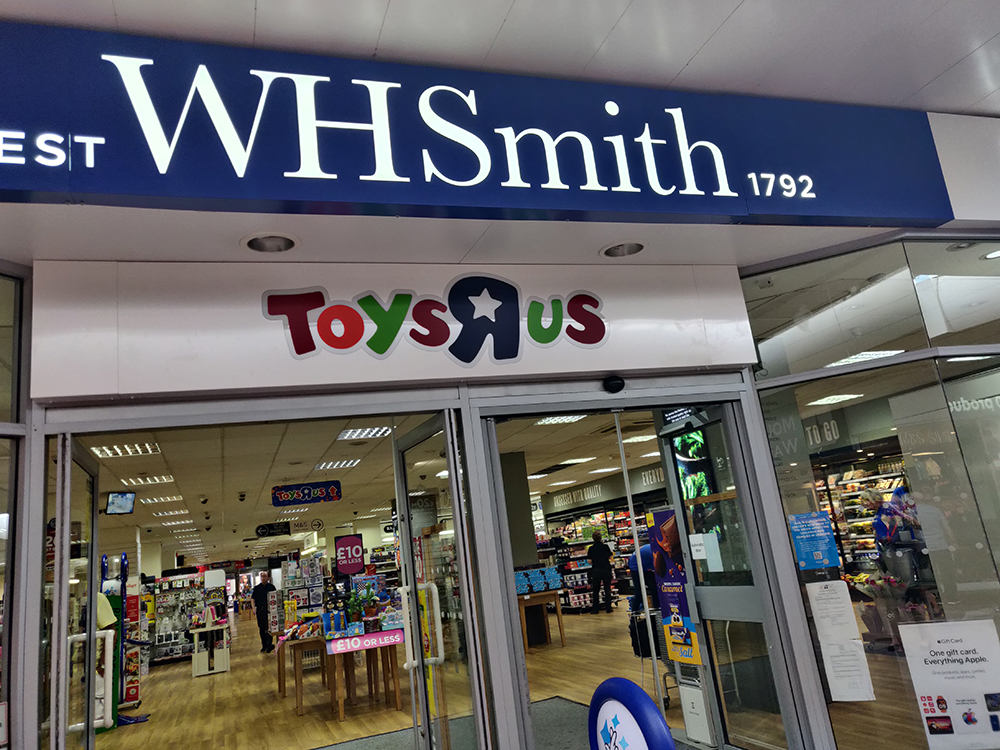Retailers have been battling with supply disruption as attacks on cargo ships by Houthi rebels in the Red Sea since November have delayed stock deliveries and forced many vessels to reroute around South Africa’s Cape of Good Hope.
The route can add an extra 10 to 14 days to cargo ships’ journey times compared to travelling through the Red Sea and the Suez Canal.
The lengthy detours have resulted in higher expenses and longer wait times for retailers
In fact, figures from earlier this month found typical shipping prices had skyrocketed 329% since November, Sky News reported.
But how are retailers dealing with the disruption?
The impact of the Red Sea attacks
The delays are hitting those that source from Asia hard with Next, Currys and Poundland among those that have flagged issues.
Poundland owner Pepco Group cautioned that the ongoing disruption could lead to supply issues in the coming months, revealing that the situation was leading to “elevated spot freight rates and delays to container lead times”.
The retail giant said it was facing “additional surcharges” from carriers because of the longer shipping routes.
“While there is limited impact on product availability currently, a prolonged issue in the region could also impact supply in the coming months.”
In January, Next boss Lord Simon Wolfson also warned of delivery delays, which he said might “moderate sales” if the disruption continued for a long period.
“A lot will depend on how long this goes on for,” Wolfson told The Guardian. “The extra sailing time eats into capacity in the network and we could begin to get constraints. At the moment it is an inconvenience not a crisis.”

However, more than a month later the disruption continues.
Gerry Power, head of country for supply chain consultancy TMX Transform says that the attacks are still adding “considerable” transit time for containers rerouting around the Suez Canal.
He believes the impact will be “felt more in the coming weeks” and says routes from Southeast Asia to Europe are suffering the biggest delays.
Already Asos has flagged that it is seeing extended shipping times, which can be as much as 10 days longer.
Power says stock issues should be expected across the industry. “The delays in shipping lines and rerouting of vessels may result in downstream inventory issues and out-of-stock items,” he says.
Which categories are the worst affected?
While the Red Sea attacks have thrown a spanner in the works across the retail industry, some sectors are more impacted than others.
Supply chain expert Patrick Lepperhoff, principal at management consultancy Inverto, believes the highly seasonal fashion sector could be hard hit.
“Retailers should be receiving their summer clothing lines about now and delivery delays are causing them difficulties. Electronics, furniture and DIY goods will also be impacted.”
Proxima executive vice president for procurement Simon Geale adds: “Goods that are smaller and have a higher profit margin may be switched to air freight, leaving the more bulky and low margin goods as the most exposed, for example furniture, consumer electronics, textiles and clothing.”
However, he highlights that ultimately, the worst affected goods “will be revealed by the resilience strategies that businesses have in place”.
So what are retailers doing?
Alongside the rerouting of cargo ships, retailers are making changes to navigate the challenges from the Red Sea attacks.
Accenture UK & Ireland retail strategy and consulting managing director Matt Jeffers explains that in the short term, businesses are looking at options to bring in goods from closer locations.
Asos and Boohoo have ramped up nearshoring, increasing sourcing from countries such as Turkey and Morocco as well as in the UK, to avoid the longer-lead times and inflated prices associated with rerouting from Asia.

Asos told Retail Week that it still uses the Suez Canal route for ocean freight shipments of longer lead products from Asia to Europe, reserving the use of faster routes for its trend-driven, seasonal lines.
Jeffers points out that one challenge is that many retailers will have already committed to the stock en route from Asia so will have to deal with excess stock issues once it arrives.
Geale adds that other options available to retailers include buying earlier and buying more, diversifying supply sources, and choosing alternative shipping routes.
However, he notes: “It’s important to remember that existing trade patterns are likely to be the most cost effective, as they are embedded into how a retailer operates today, so any deviation has a ‘bullwhip effect’ and cost implications.”
Longer term solutions for retailers
In terms of soaring costs, Phil Bulman, partner at management consultant Arthur D. Little, is hopeful that they won’t stay up for for a protracted period.
“If you look at stats they’re not as high as during the squeeze that came just at the end of Covid, and they went up and came down quite quickly.”
“Although I do suspect there will be a level of buffer that the freight companies will put in to cover this risk which could be for multiple years.”
He does believe that if the situation continues, freight insurance will rise and stay high due to “uncertainty and insurance companies responding to that history”.
He says: “It does feel as though with the Middle East generally we could be talking multiple years of this sort of issue flaring up which could mean this could happen more often.”
This willl likely lead to higher prices when the freight market does finally stabilise.
Beyond the price rises, the disruption has highlighted the vulnerability of global supply chains and the need for retailers to mitigate risks.
Geale says: “The World Economic Forum has labelled interstate conflict in its top five risks for the next two years when correlating likelihood and severity.
“Businesses must look at the situation in the Middle East, and indeed the war in Ukraine as a critical item on their risk registers. Planning accordingly for escalations will be key, as they will have profound consequences and could extend into oil prices and cyber security.”
Bulman believes that nearshoring will not be a short term fix but an increasingly common approach, particularly in fashion. He says: “In the longer term, companies that have been reliant on those shipping routes and reliant on shipping of products coming from further afield will consider nearshoring.
“Of course in some industries it won’t be possible but for some it absolutely will.”
Jeffers says that all retailers should have “backup capacities” in place to get stock from different locations or via different methods of transport.
“But in the short term, apparel retailers should work with suppliers to expedite the production of goods for the autumn/winter season of 2024 to ensure they have the right stock in place for what is a key moment for the industry.”
With the situation showing no signs of slowing, it looks as though retailers will need to stay braced for an indefinite period of disruption.
Click here to sign up to Retail Gazette‘s free daily email newsletter

















